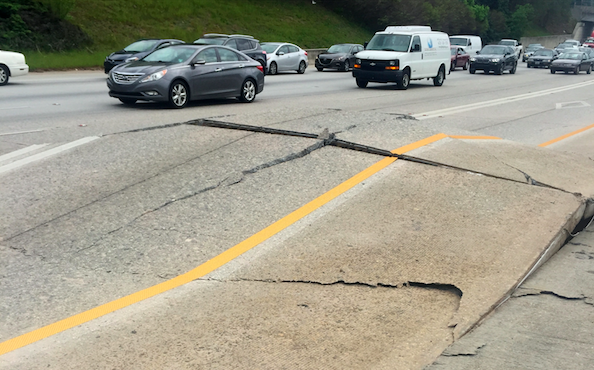Published on June 17, 2019

Seattle hit a record 95 degrees on Wednesday, the hottest June 12 on record and the hottest day of 2019 so far. The record heat is what likely caused a part of 4th Avenue S. to buckle in Seattle’s SODO neighborhood.
We’ve seen it before. The rays from the sun heat up pavement hotter than the surrounding air. When things get warm, they expand. If they expand too much they break, twist, buckle, stretch, and sag, depending on the material. When they freeze, most material other than ice contracts.
The stretch of concrete panels that make up 4th Avenue S. past the Costco was poured more than 50 years ago, the Seattle Department of Transportation said.
The road was poured in sections complete with expansion joints, which may have been part of the reason why the road buckled Wednesday, according to Steven Muench, professor of civil and environmental engineering at the University of Washington.
“Stuff gets into expansion joints and there’s no place to go,” Muench said.
The expansion joints fill up with all sorts of debris including rocks, broken concrete, and other hard materials. When the concrete panel expands, it has no place to go and the panel can “blow up,” Muench said.
Continue reading at King5 News.
Originally written by Glenn Farley for King5 News.